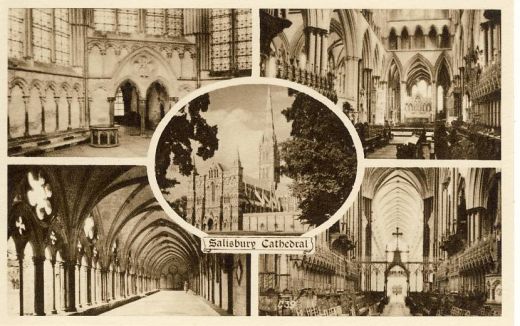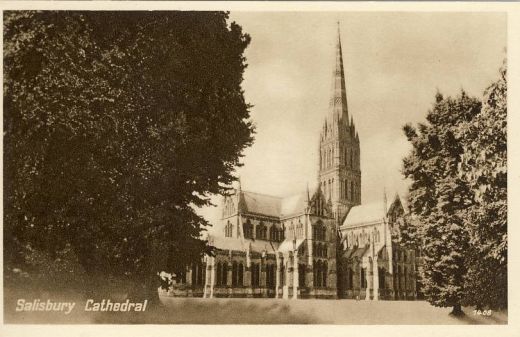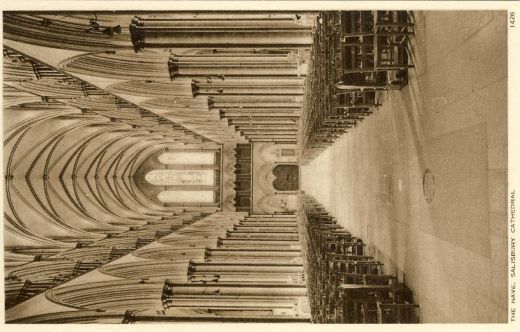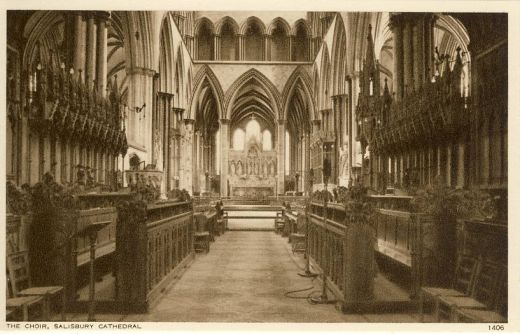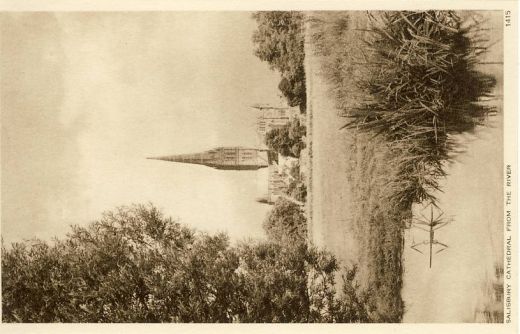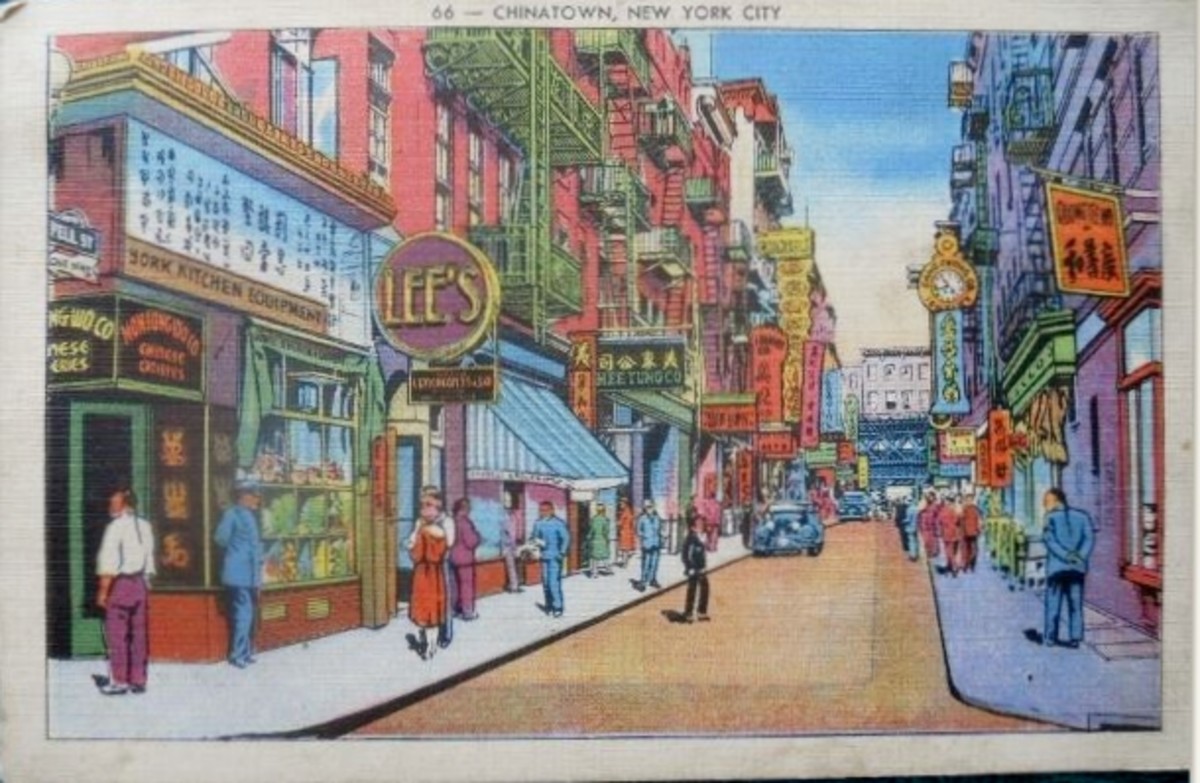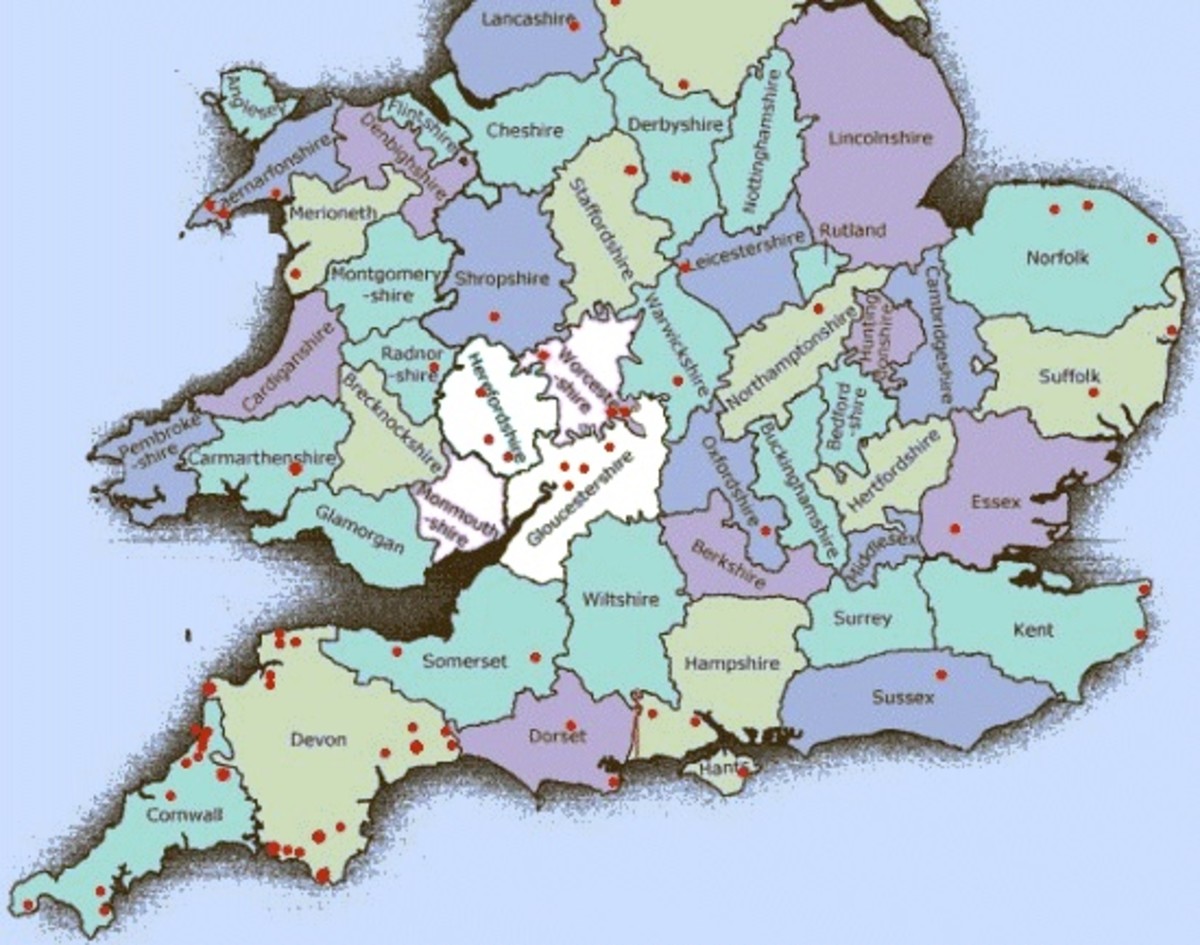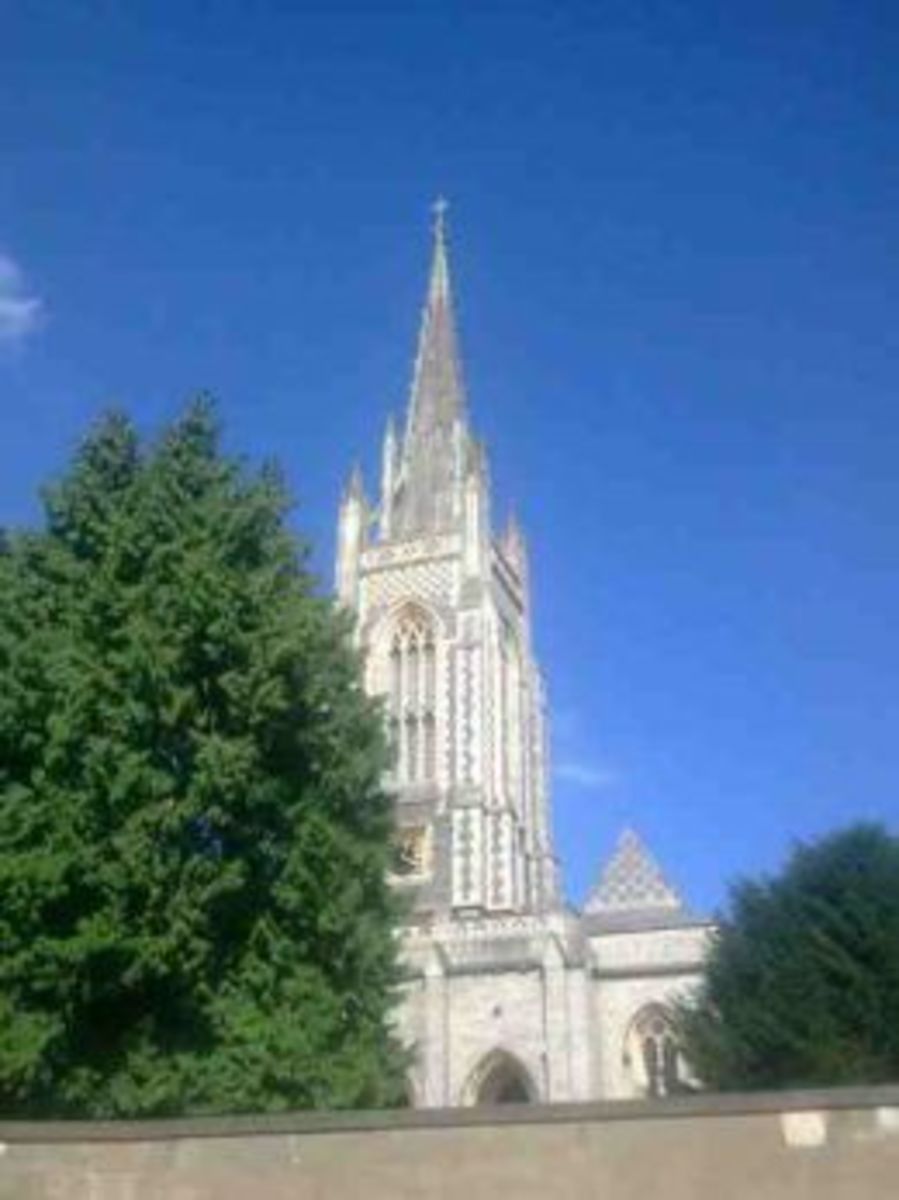- HubPages»
- Travel and Places»
- Visiting Europe»
- United Kingdom
Magna Carta and Salisbury Cathedral: Human Rights and Vintage Postcards
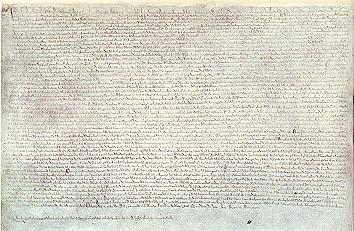
What say the reeds at Runnymede?
At Runnymede, at Runnymede,
Your rights were won at Runnymede!
No freeman shall be fined or bound,
Or dispossessed of freehold ground,
Except by lawful judgement found
And passed upon him by his peers.
Forget not, after all these years,
The Charter signed at Runnymede.'- from the poem “What say the reeds at Runnymede” by Rudyard Kipling.
One original copy of “The Charter signed at Runnymede” on which much of the concept of human rights, at least in the western world, is based, is kept in the chapter house of Salisbury Cathedral in the county of Wiltshire, in the ecclesiastical province of Canterbury, England, some distance from Runnymede which is on the banks of the Thames River near London in the county of Surrey.
The Magna Carta copy came to be in Salisbury because among those present at the signing of the charter between the Barons and King John I of England in 1215 was one Elias of Dereham, who later became a member of the Chapter of Salisbury Cathedral and supervised much of its construction. At the time of the signing of the Charter Elias was given the task of taking on of the four copies made and publicising it around England.
So this Hub is about two stories – one is the source document on human rights in the western world, and the other is the medieval Cathedral Church of the Blessed Virgin Mary, of unique design and great beauty, a place of prayer and pilgrimage for almost eight Centuries.
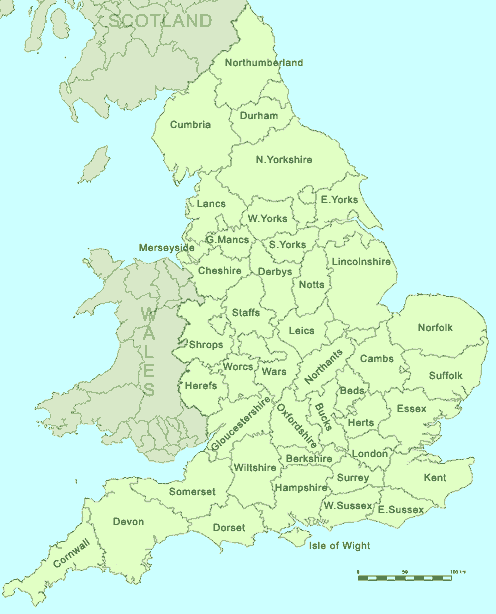
Magna Carta Libertatum
The Magna Carta (properly called Magna Carta Libertatum ) ended the so-called “divine right” by which the monarch could rule in England up to that time, and put an early form of the rule of law in place to limit the actions of the King by giving the Barons and nobles certain rights.
One of the most important principles written into the Charter was that of habeas corpus or to give it its full title: habeas corpus ad subjiciendu. This right, which derives (for those who want to look them up!) from Clauses 36, 38, 39 and 40, was in fact first invoked in a court case in 1305.
Habeas corpus is a key principle of the rule of law as it places limits on arbitrary or capricious actions by legal authorities or rulers. Indeed one of the first actions of governments wanting to limit the rights of their citizens is to suspend (where it exists) the right of habeas corpus . This was the case in South Africa when the apartheid regime began its programme of curtailing all citizens rights “legally.”
So Salisbury Cathedral should be held in high regard by all who love and honour liberty!
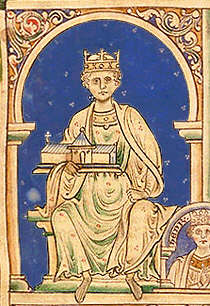
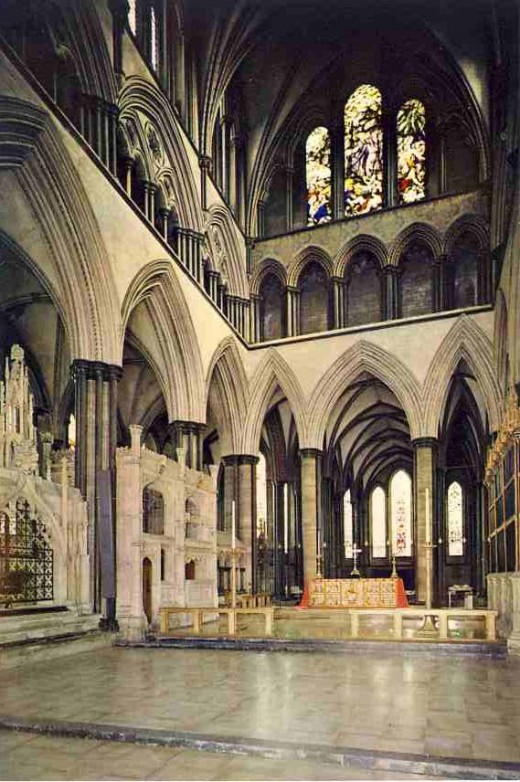
The Cathedral
But the Cathedral has other claims on one's regard – its position in the architectural history of England and its beauty.
The Cathedral also holds a special place in ecclesiastical history because of its links to “Old Sarum” one of the oldest settlements in all of England, dating back some 5000 years. During the Roman occupation of Britain it was used by them as a military station, called on their maps Sorviodunum.
In 1086 all the notables of England were summoned to Old Sarum to pay homage to William the Conqueror, and the town, by this time quite large for its time, was listed in the famous Domesday Book as “Sarisburia.”
Old Sarum was not always peaceful however, and Eleanor of Aquitaine was held prisoner there for 15 years by her husband, King Henry II, the first Plantagenet monarch of England and great-grandson of the Conqueror. Unfortunately the Magna carta had not yet been signed so poor Eleanore could not benefit from habeas corpus !
But more to the point of our story, conflict arose between the church authorities and the military at Old Sarum, leading the Bishop, Richard Poore, to request permission to relocate the Cathedral to a new site on the banks of the Avon River, inevitably called “New Sarum” at first, but later called Salisbury.
There is a legend that the good Bishop, in order to decide where to build his new seat, shot an arrow in the general direction in which he wanted to move. This arrow apparently hit a deer which finally died and where it died the Bishop built his Cathedral. No animals' rights movements in those days, apparently!
The Cathedral itself is unique among English Cathedrals because it took only about 38 years to complete, from 1220 to 1258, as against the more usual couple of hundred. As a result, the architectural style is more coherent than that of any of the other Gothic Cathedrals in England.
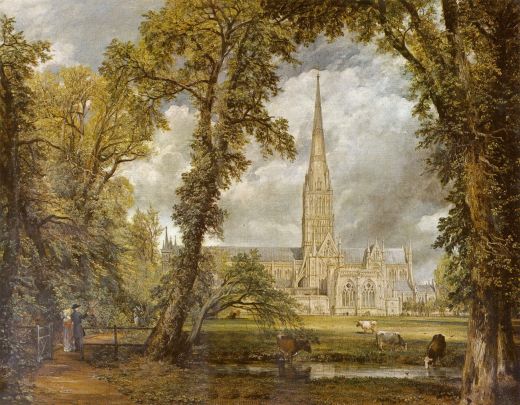
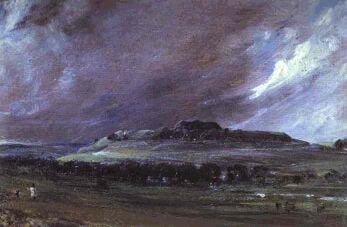
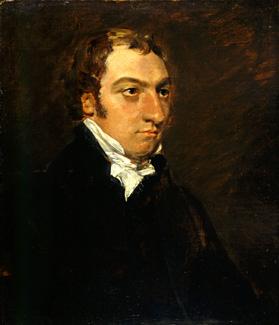
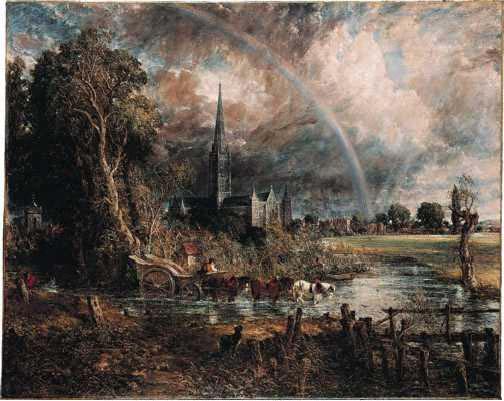
Constable and the Cathedral
The Gothic style of architecture lasted from the middle of the 12th Century up to the beginning of the Renaissance in the 15th Century, and was characterised chiefly by the introduction of the pointed arch, a design feature which derived from the architecture of the Middle East. For example the great mosques of Samarra in Iraq and Ibn Tulun in Cairo made early use of this feature.
As a style Gothic was not monolithic and went through several phases, generally called Early English (1180 to 1275); Decorated (1275 to 1380) and Perpendicular (1380 – 1520), although these periods are more stylistic than strictly chronological.
Salisbury Cathedral is almost completely in the Early English style, characterised by the use of lancet, or slender, pointed arch, windows.
The chapter house in which the Magna carta copy is kept, is an octagonal building with a slender central pillar and a decorative frieze on the interior, depicting biblical scenes.
The Cathedral also had a clock without a face (it only chimed the hours), a clock which is now in the Science Museum in London. The clock itself dates from about 1386 and is in full working order, making it the oldest working clock in the world.
The Cathedral has long attracted artists, among them the famous landscape painter John Constable, by its physical beauty. Constable, possibly best-loved for his painting The Hay Wain of 1821, was commissioned by his friend the Bishop of Salisbury, John Fisher, to paint the Cathedral, which he did, as well as a portrait of the good Bishop.
Constable also painted a view of Old Sarum.
At the Bishop's death Constable was asked to do another painting of the Cathedral, which he did, the painting being called “Salisbury meadows. “ In it Constable painted a rainbow with it end over the late Bishop's house in the Cathedral Close.
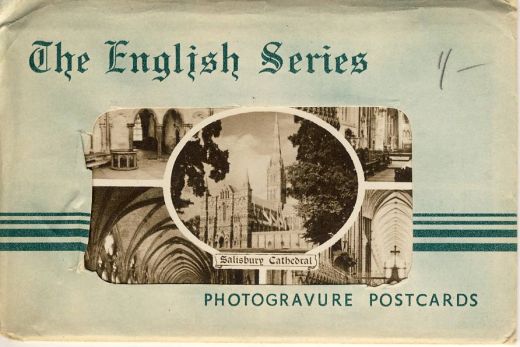
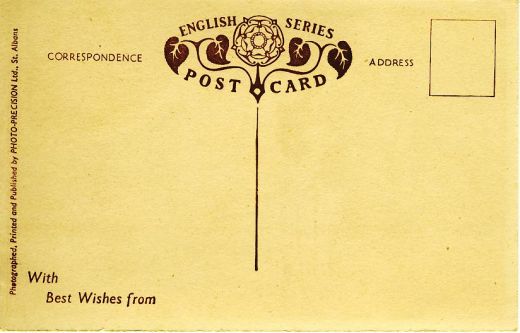
The Postcards
What prompted my research into all of these things was the discovery among my late father's things of a set of six photogravure divided back postcards of the Cathedral. Photogravure is an intaglio printing process in which a mechanised process of etching plates for the printing is used.
The postcards are in almost mint condition with no writing on them and neither were they postally used. They were printed and published by Photo-Precision Ltd., of St Albans. They are still in their original envelope with the price marked in pencil: 1 shilling.
The backs of the cards have a very pretty rose blossom and leaves design at the top with the words “English Series” incorporated into the design.
The Postcards
Click thumbnail to view full-size






